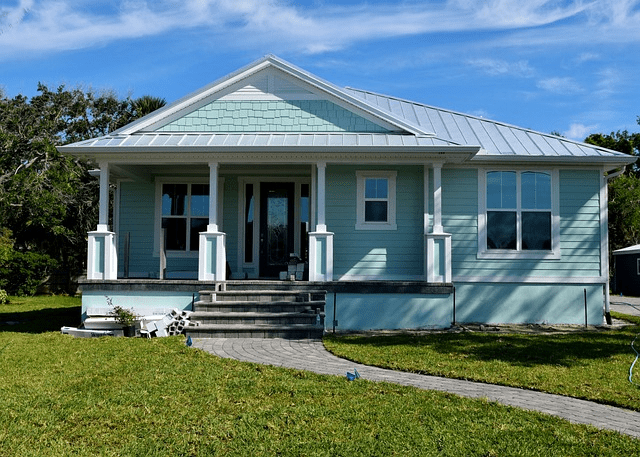House Tenting Essentials: Your Ultimate Guide to Termite Fumigation
House tenting is a decisive step in eradicating termites, but it comes with complexities and considerations. This article will give you an overview of the process, explain why it’s essential for severe infestations, and guide you through the steps involved. Expect insights into safety measures, pricing, and keeping your home termite-free post-tenting.
Key Takeaways
Termite tenting, or structural fumigation, is a comprehensive extermination method that uses gas to permeate and eradicate drywood termite infestations in all areas of the home.
The termite fumigation process involves careful preparation, including evacuating inhabitants and securing possessions, a detailed tenting procedure, and post-fumigation ventilation to ensure safety and effectiveness.
A variety of termite species require different treatment methods; while house tenting is effective for drywood termites, subterranean termites require bait stations and termiticides, highlighting the need for tailored pest control strategies.
Understanding House Tenting
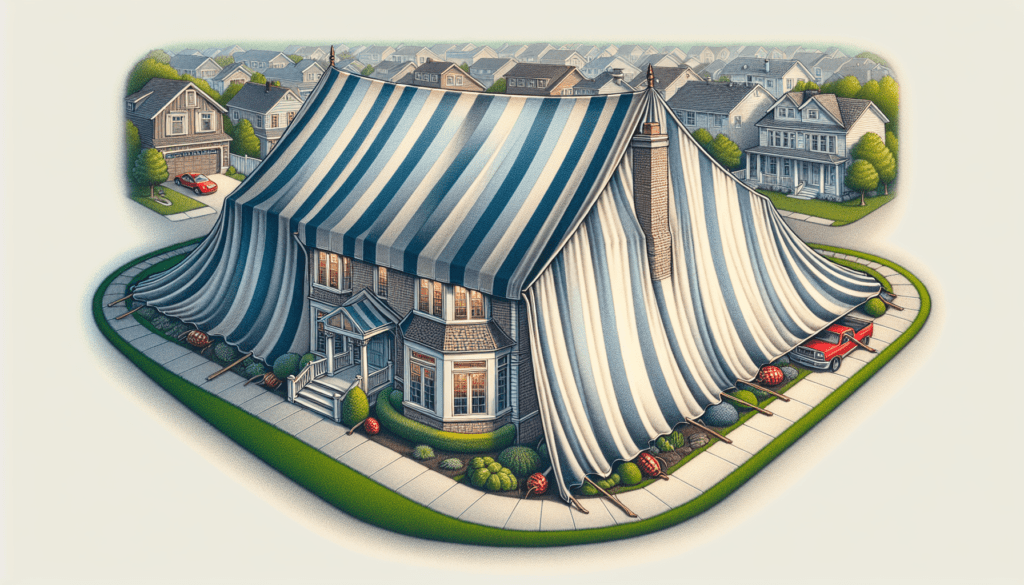
Termite tenting is more than just pest control; it’s a strategic battle plan to reclaim your home from the clutches of termite infestations. This method, also known as structural fumigation, is not just any fight—it’s the ultimate showdown utilizing a large tent and powerful, invisible allies in the form of gaseous pesticides.
It’s time to pull back the curtain on this formidable tactic and unveil the prowess it holds in protecting your entire house.
What is House Tenting?
House tenting, a term synonymous with the tent fumigation process, is akin to placing your home under a protective spell. Envision a large tent cloaking your entire house, creating a sealed realm where gaseous pesticides or heat weave through every nook and cranny to seek and destroy drywood termite interlopers.
This process isn’t just effective; it’s a meticulously calculated assault on termites, using sulfuryl fluoride gas to deplete their oxygen and disrupt their nervous system, ushering in their demise.
Why is House Tenting Necessary?
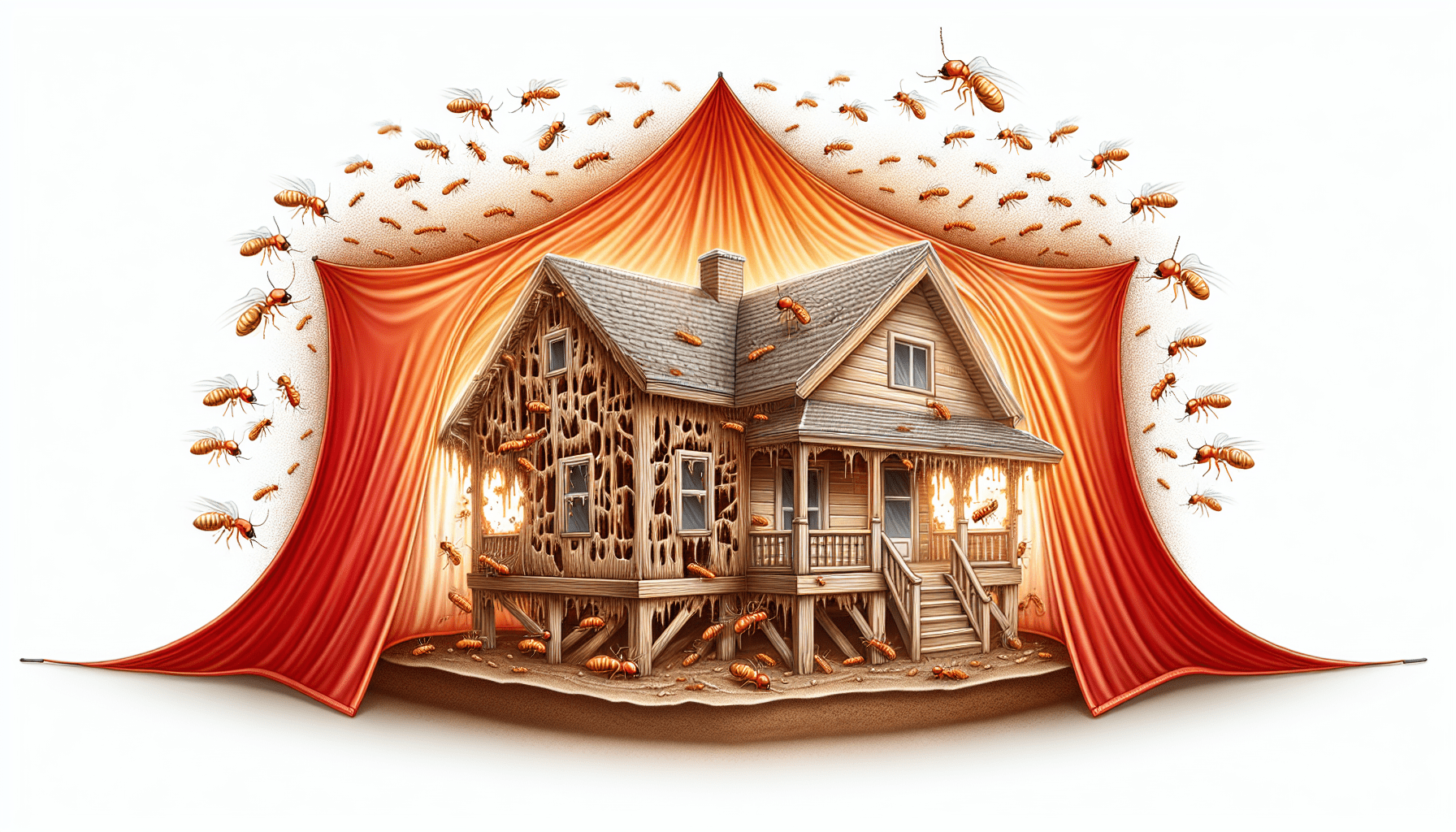
When termites lay siege to your home, they don’t just nibble on the edges; they launch a full-scale invasion, targeting its very foundation and concealed wooden bastions. House tenting is the necessary countermeasure for severe, widespread, and cunning drywood termite infestations that defy simpler tactics. It’s the comprehensive termite fumigation strategy that ensures a thorough extermination, sparing homeowners the devastation of structural damage and the gamble of DIY attempts fraught with risks,.
The Termite Fumigation Process
Embarking on termite fumigation is akin to preparing for a meticulous surgical procedure. It’s a process that demands precision, from the initial preparation to the final liberation of your home from termite tyranny. This journey, which can span from a mere 24 hours to an entire week, requires patience and trust in the artistry of pest control experts.
Let’s navigate the stages of this crucial operation together, ensuring your home emerges triumphant and termite-free.
Preparing Your Home for Fumigation
Termite fumigation preparation is essential to safeguarding your belongings and ensuring the efficacy of the termite treatment. This preparation phase demands:
A strategic evacuation of the premises by all living beings
The meticulous handling of your possessions
Food, medications, and even your cherished house plants must be shielded within special fumigation bags or removed entirely.
Utilities, especially gas, must be turned off, creating a still environment ready for the impending fumigant gas to perform its lethal dance.
The Tenting Procedure
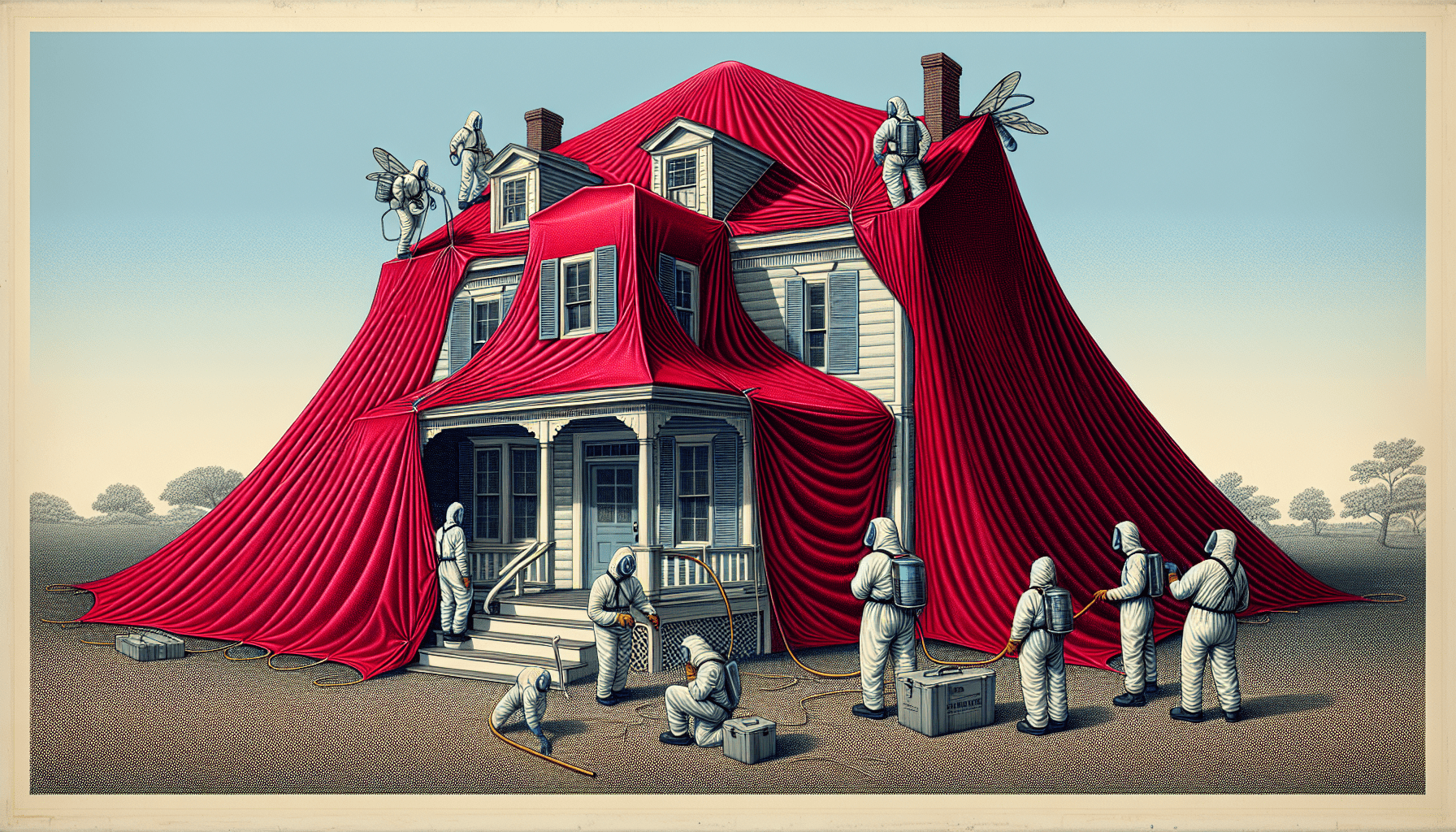
The tenting procedure is the crescendo of the termite fumigation symphony. A large tent unfurls over your home, creating a sealed stage where the pesticide gas takes the lead role. This gas, once released, permeates every crevice, pursuing termites to their most clandestine lairs. It’s a performance that hinges on the expertise of the pest control company; the tent must be constructed effectively, ensuring minimal gas leakage and maximum impact on the termite populations that lurk within.
Post-Fumigation Steps
After the curtain falls on the fume process, the stage must be cleared, and this is done through the meticulous aeration of your home. For no less than 72 hours, the house breathes, expelling the remnants of fumigant gas, as experts measure concentrations to ensure safe re-entry. It’s a waiting game, but one that culminates in the assurance that your home is safe and secure, free of both termites and harmful fumigant levels.
Types of Termites and Treatment Methods
In the world of termites, one size does not fit all. Each species, with its own distinctive behavior and habitat preferences, requires a tailored treatment method. Tent fumigation may hold the key to eradicating drywood termites, but when it comes to subterranean or other types, the approach shifts. Understanding these differences is critical in choosing the most effective termite treatment technique for your unwelcome houseguests.
Drywood Termites
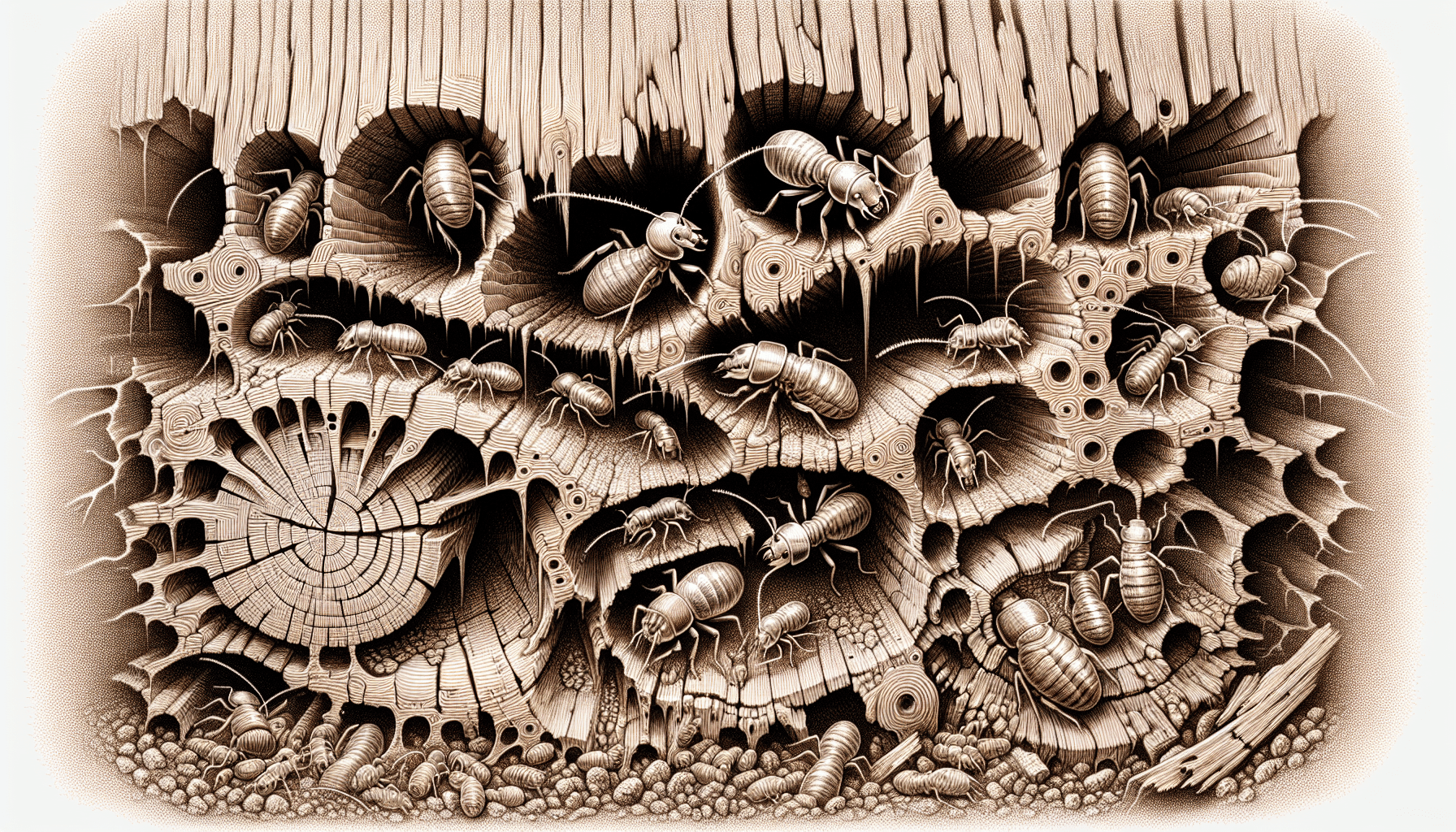
Drywood termites, the culprits behind many termite tenting calls to arms, lurk in the dry regions of your home, away from the soil, feasting on your attic and wooden furniture. These termites are formidable opponents, requiring a range of arsenals including termite tenting, direct wood treatment, and even the removal of infested wood when visible.
After the battle, vigilance remains key; regular maintenance and sealing entry points help prevent drywood termite infestations, ensuring future colonies don’t claim your home as their own.
Subterranean Termites
Subterranean termites, the stealthy invaders from below, demand a different strategy. These earth-dwelling termites are impervious to the charms of termite tenting, necessitating the use of bait stations and termiticides that target their subterranean termite infestations and fortresses.
The bait stations, monitored regularly, serve as Trojan horses, inviting termites to feast and carry the poison back to their colonies, ensuring the collapse of their underground empires.
Other Termite Species
Turning our attention to other termite species, such as dampwood termites, we see the importance of moisture control and targeted treatments. These larger termites, with their sizable pincers, favor moist and decaying wood, requiring direct termiticide applications to quell their spread.
Cost-effective and localized, these termite treatments are a testament to the adaptability required in the ongoing war against termites of all kinds.
Safety Measures and Considerations
The crusade against termites must be waged safely, with the well-being of homeowners and the environment as a paramount concern. The fumigants used in termite tenting, while effective against pests, require careful handling to prevent adverse effects on human health. It is of utmost importance that the fumigation process, a hazardous operation, is conducted under the strictest safety protocols to ensure the most comprehensive protection for all.
Hiring Certified Professionals
To ensure a successful termite fumigation campaign, the generals must be chosen wisely. As a certified termite expert, armed with extensive training and passed certification tests, they are the elite forces needed for this critical mission. They possess the specialized knowledge to accurately gauge the potency of the fumigant gas and ensure the complete eradication of termites while safeguarding the health of your home’s inhabitants.
Proper Ventilation and Waiting Periods
Once the battle against termites has been fought, the air must be cleared—literally. Proper ventilation and waiting periods are vital to ensure that the invisible yet potent gas has dissipated. The use of chloropicrin serves as a sentinel, warning of the presence of fumigants and ensuring that homeowners only return when the air within their castle walls is safe to breathe.
Handling Household Items
In the theater of termite fumigation, your personal effects are not mere bystanders; they require careful management. While it is a relief to know that household items do not retain fumigant residues after the home has been sufficiently aired out, certain fabrics and carpets may hold onto the fumigant for a longer duration.
A proactive program of handling these items with care is essential to ensure that, post-fumigation, your home is not only termite-free but also free from potentially dangerous fumigant remnants,.
Costs and Factors Affecting Termite Tenting
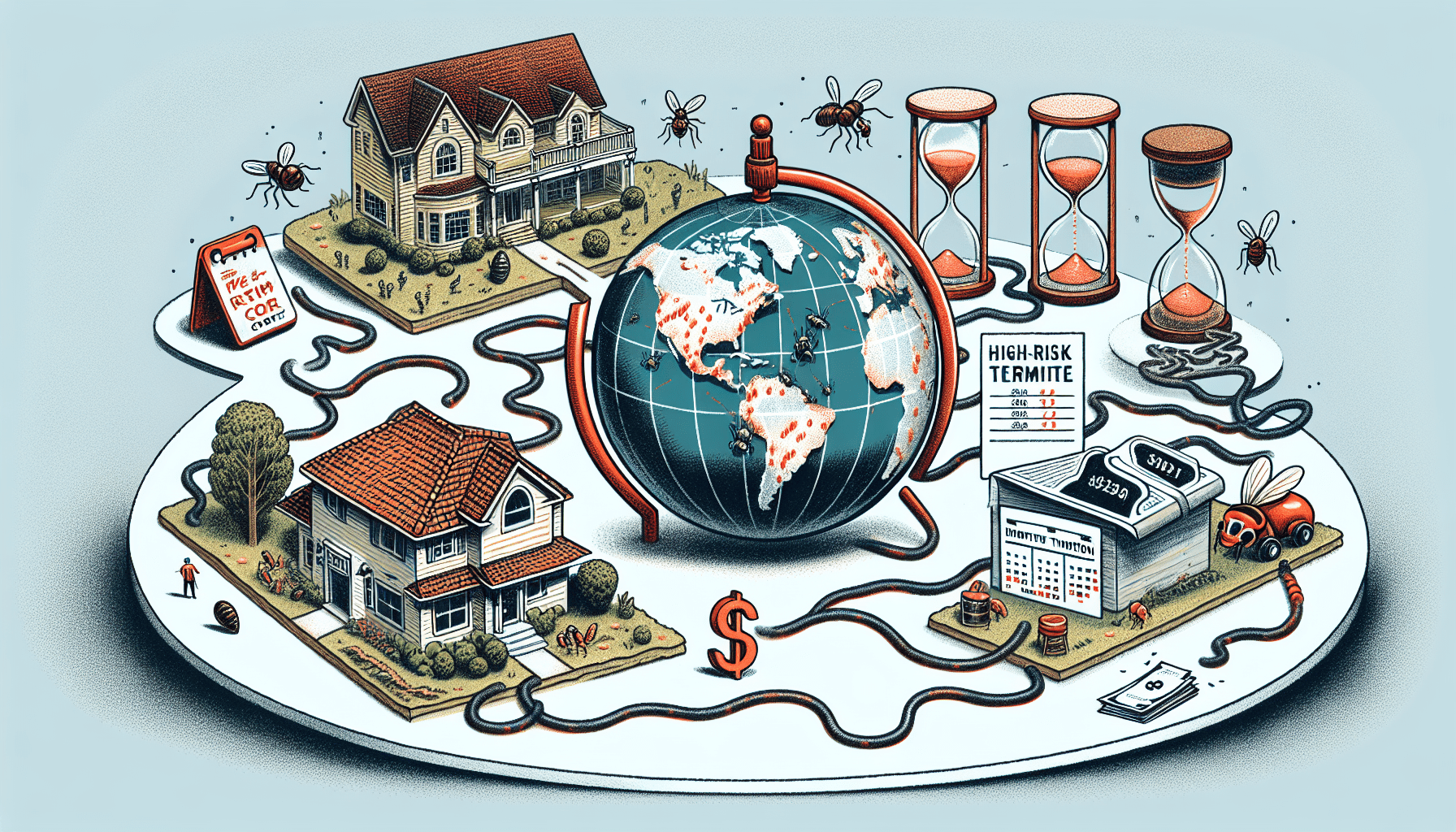
When it comes to termite tenting, the financial cost is as much a consideration as the safety and effectiveness of the treatment. Homeowners must navigate a sea of variables, from the square footage of their property to the duration of fumigation, all of which play a role in the final bill. Understanding these factors and their impact on pricing is crucial in preparing for the investment you’re making in the health and longevity of your home.
Estimating Tenting Costs
The cost of termite tenting is not set in stone; it scales with the size of your castle. Smaller homes may see costs as low as $1,200, while larger estates could face a bill up to $16,000. This variable pricing reflects the scope of the termite threat and the extent of the measures required to ensure your home remains a stronghold against future infestations.
Factors That Can Affect Pricing
Setting the stage for termite tenting also involves considering other factors that can steer the cost. These factors include:
The nature of the termite species
The need for additional services such as inspections and follow-up treatments
The temporary relocation during the fumigation process
All of these factors can sway the final investment.
Each of these elements must be weighed to understand the full financial scope of defending your home from termites.
Preventing Future Termite Infestations
The aftermath of a termite fumigation is not a time for complacency; it is a time to fortify your defenses against future invasions. A combination of direct wood treatment and regular maintenance serves as the most comprehensive protection program, ensuring that your home remains a bastion against termite infestations. With termite fumigation effective in eliminating existing colonies, it’s crucial to take these additional steps to prevent re-infestation.
From sealing potential entry points to regular checks for moisture, the war against termites is ongoing, and vigilance is your strongest ally.
Regular Maintenance and Inspections
In the quest to maintain a termite-free home, regular maintenance and inspections are the scouts on the lookout for early signs of termite activity. Yearly examinations by certified termite experts can pinpoint the subtle hints of an infestation, allowing for swift action before termites can cause significant damage.
Homeowners should also be on alert for any indicators of termite presence, such as damaged wood or unusual activity, as these can be harbingers of a lurking threat.
Direct Wood Treatment
Direct wood treatment stands as a shield, protecting the vulnerable wooden elements of your home from termite conquest. Treating the wood directly with specially formulated products creates an inhospitable barrier for termites, preserving the integrity of the wood and safeguarding it against future infestations. It’s a solid line of defense, serving to maintain the fortress that is your home.
Pest Control Services
But the battle doesn’t end with a single victory. Professional pest control services provide a continuous strategy, a vigilant guard against the resurgence of termites. These experts offer comprehensive plans, from quarterly to annual, ensuring that any hint of termite activity is swiftly addressed.
Investing in such services is a pledge to the ongoing security of your home, a commitment to keeping it a termite-free sanctuary for years to come,.
Summary
As our exploration of termite tenting and fumigation draws to a close, we leave equipped with the knowledge to not only address the immediate threat of termite infestations but also to build a robust defense against future invasions. The key to maintaining a termite-free home lies in understanding the nuances of termite behavior, the importance of expert intervention, and the value of continuous vigilance. With this guide as your compass, you can navigate the complexities of termite fumigation with confidence, ensuring your home stands strong for years to come.
Frequently Asked Questions
How long does the termite fumigation process take?
The tent fumigation process can take anywhere from 24 to 72 hours, and up to a week for larger properties or severe infestations. It varies depending on the size of the property and the severity of the infestation.
Are there any items I should remove from my home before fumigation?
Yes, you should remove upholstered furniture, food, pet food, medications, vitamins, and plants before fumigation to avoid contamination.
Can I stay in my home during termite tenting?
No, you must vacate the premises during termite tenting to avoid exposure to harmful fumigant gas, including your pets.
How do I know when it’s safe to re-enter my home after fumigation?
You’ll know it’s safe to re-enter your home after fumigation when a pest control expert measures the sulfuryl fluoride levels to ensure they have decreased to safe levels (less than 1 part per million).
What are the most effective methods for preventing future termite infestations?
To prevent future termite infestations, it’s important to schedule regular maintenance, inspections, and direct wood treatment, and consider ongoing pest control services to keep termites at bay. These proactive measures can help protect your property from termite damage.
Proudly powered by BerryRyan


